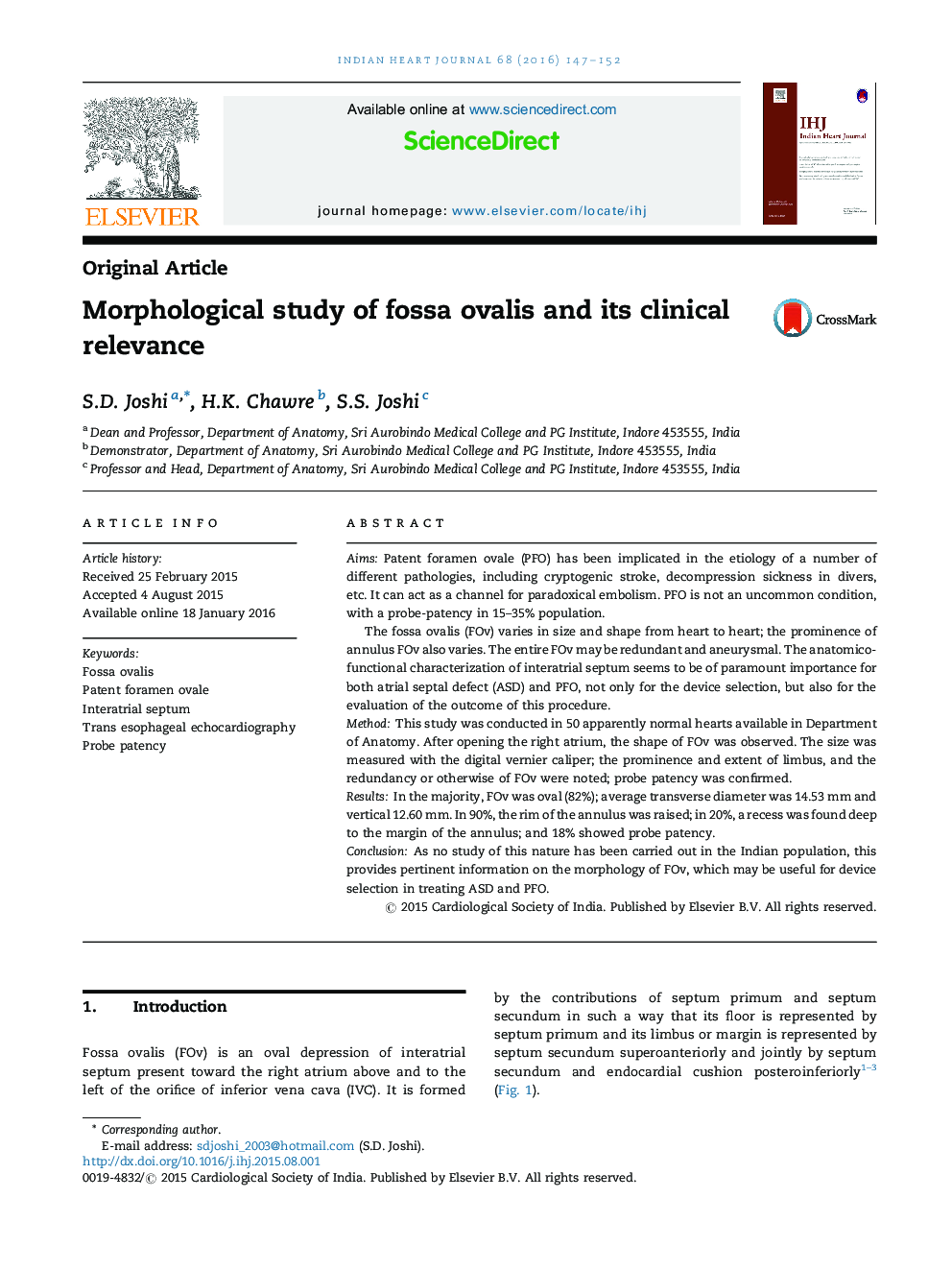| Article ID | Journal | Published Year | Pages | File Type |
|---|---|---|---|---|
| 2927345 | Indian Heart Journal | 2016 | 6 Pages |
AimsPatent foramen ovale (PFO) has been implicated in the etiology of a number of different pathologies, including cryptogenic stroke, decompression sickness in divers, etc. It can act as a channel for paradoxical embolism. PFO is not an uncommon condition, with a probe-patency in 15–35% population.The fossa ovalis (FOv) varies in size and shape from heart to heart; the prominence of annulus FOv also varies. The entire FOv may be redundant and aneurysmal. The anatomico-functional characterization of interatrial septum seems to be of paramount importance for both atrial septal defect (ASD) and PFO, not only for the device selection, but also for the evaluation of the outcome of this procedure.MethodThis study was conducted in 50 apparently normal hearts available in Department of Anatomy. After opening the right atrium, the shape of FOv was observed. The size was measured with the digital vernier caliper; the prominence and extent of limbus, and the redundancy or otherwise of FOv were noted; probe patency was confirmed.ResultsIn the majority, FOv was oval (82%); average transverse diameter was 14.53 mm and vertical 12.60 mm. In 90%, the rim of the annulus was raised; in 20%, a recess was found deep to the margin of the annulus; and 18% showed probe patency.ConclusionAs no study of this nature has been carried out in the Indian population, this provides pertinent information on the morphology of FOv, which may be useful for device selection in treating ASD and PFO.
